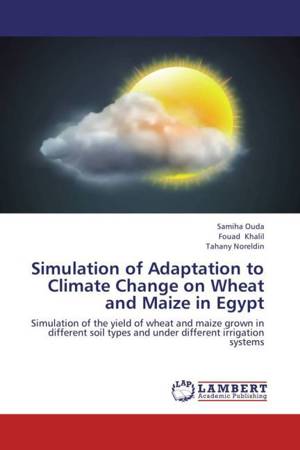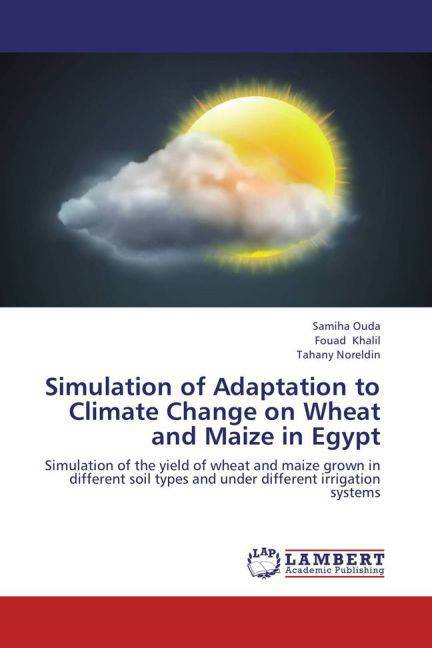
Bedankt voor het vertrouwen het afgelopen jaar! Om jou te bedanken bieden we GRATIS verzending (in België) aan op alles gedurende de hele maand januari.
- Afhalen na 1 uur in een winkel met voorraad
- In januari gratis thuislevering in België
- Ruim aanbod met 7 miljoen producten
Bedankt voor het vertrouwen het afgelopen jaar! Om jou te bedanken bieden we GRATIS verzending (in België) aan op alles gedurende de hele maand januari.
- Afhalen na 1 uur in een winkel met voorraad
- In januari gratis thuislevering in België
- Ruim aanbod met 7 miljoen producten
Zoeken
Simulation of Adaptation to Climate Change on Wheat and Maize in Egypt
Simulation of the yield of wheat and maize grown in different soil types and under different irrigation systems
Samiha Ouda, Fouad Khalil, Tahany Noreldin
Paperback | Engels
€ 66,45
+ 132 punten
Omschrijving
Soil type and irrigation systems could play an important role in determination of yield losses under climate change conditions. This concept is tackled in order to shed a light on the importance of developing a strategy to reduce climate change risk on wheat and maize. Wheat was grown in eight sites and maize was grown in five sites. CropSyst model was calibrated and validated and two climate change scenarios were incorporated in the model. The model was run and the effect of climate change was assessed. The results revealed that the yield of both crops will be reduced under climate change. The percentage of yield reduction depended upon the location of the experimental site, soil type and irrigation system. High yield losses could occur in the Middle of Egypt, compared with the North of Egypt. Furthermore, growing these crops in sandy soil and under surface irrigation will increase yield losses.
Specificaties
Betrokkenen
- Auteur(s):
- Uitgeverij:
Inhoud
- Aantal bladzijden:
- 84
- Taal:
- Engels
Eigenschappen
- Productcode (EAN):
- 9783659442797
- Verschijningsdatum:
- 12/08/2013
- Uitvoering:
- Paperback
- Afmetingen:
- 150 mm x 220 mm
- Gewicht:
- 136 g

Alleen bij Standaard Boekhandel
+ 132 punten op je klantenkaart van Standaard Boekhandel
Beoordelingen
We publiceren alleen reviews die voldoen aan de voorwaarden voor reviews. Bekijk onze voorwaarden voor reviews.









